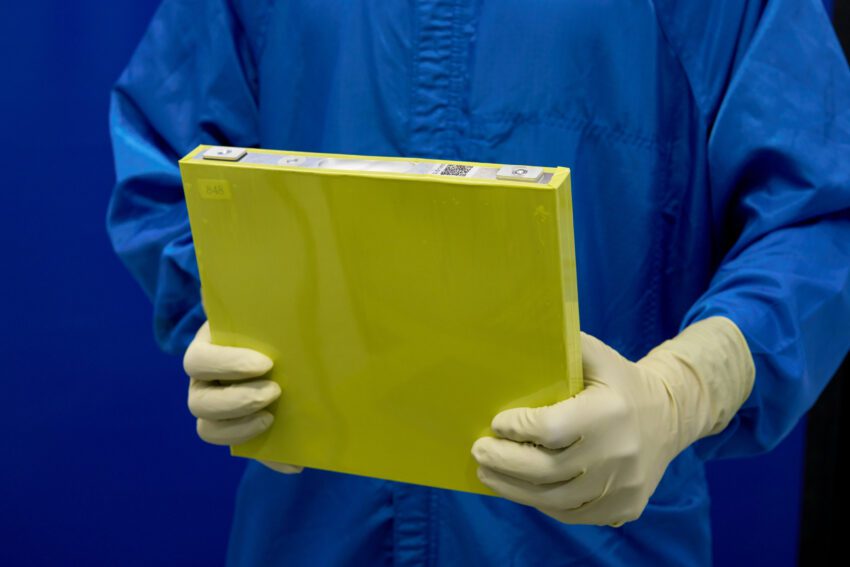
the lab where gm is cooking up General Motors is intensifying its efforts to develop advanced electric vehicle (EV) batteries at its Wallace Battery Cell Innovation Center in suburban Detroit, aiming to enhance performance and reduce costs in a competitive market.
the lab where gm is cooking up
Overview of the Wallace Battery Cell Innovation Center
Located in the heart of Michigan, the Wallace Battery Cell Innovation Center is a state-of-the-art facility dedicated to the research and development of next-generation battery technologies. This facility is part of GM’s broader strategy to secure a leading position in the EV market, particularly as competition intensifies with companies in China and elsewhere. The center is equipped with cutting-edge technology and staffed by a team of scientists and engineers focused on overcoming the challenges associated with lithium-ion battery performance.
Research Focus Areas
At the Wallace Battery Cell Innovation Center, researchers are engaged in a variety of critical projects aimed at improving battery efficiency, longevity, and safety. Key areas of focus include:
- Environmental Stress Testing: Scientists are simulating extreme environmental conditions to understand how lithium-ion cells perform under stress. This includes exposure to desert heat, arctic cold, and jungle humidity, which are crucial for ensuring that batteries can withstand real-world conditions.
- Charge and Discharge Cycles: Researchers are conducting extensive testing on the charge and discharge cycles of battery cells. This process is essential for determining how long a battery can last before its performance begins to degrade.
- Cell Chemistry Analysis: Using advanced tools like electron microscopes, researchers are examining cell chemistries at the atomic level. This deep analysis allows them to identify potential improvements in materials that could lead to better battery performance.
Technological Advancements
One of the standout features of the Wallace Battery Cell Innovation Center is the Megashaker, a large-scale testing apparatus designed to simulate the stresses that batteries will face in real-world applications. This facility allows GM to test battery packs that power some of its largest vehicles, including models with double-stacked, 205-kilowatt-hour battery packs.
Megashaker and Its Importance
The Megashaker is a crucial tool in GM’s battery development arsenal. It enables researchers to test the durability and reliability of battery packs under various conditions, including vibrations, shocks, and temperature fluctuations. By subjecting battery packs to these rigorous tests, GM aims to ensure that its EVs will perform reliably over their lifetimes, even in challenging environments.
Competitive Landscape
The race to develop superior EV batteries is heating up, particularly as automakers around the world strive to meet increasing consumer demand for electric vehicles. GM’s efforts at the Wallace Battery Cell Innovation Center are part of a larger strategy to compete with established players in the EV market, particularly those in China, which has emerged as a global leader in battery production.
China’s Dominance in Battery Manufacturing
China currently dominates the global battery supply chain, producing a significant percentage of the world’s lithium-ion batteries. This has raised concerns among U.S. automakers, including GM, about their ability to compete effectively. As a response, GM is investing heavily in domestic battery production and innovation to reduce reliance on foreign suppliers.
Investment in Battery Technology
GM has committed billions of dollars to enhance its battery technology and production capabilities. This investment includes not only the development of new battery chemistries but also the establishment of manufacturing facilities in the U.S. to produce batteries at scale. By bringing battery production closer to home, GM aims to streamline its supply chain and reduce costs.
Future Implications
The advancements being made at the Wallace Battery Cell Innovation Center have significant implications for the future of electric vehicles. As GM continues to refine its battery technology, consumers can expect improvements in several key areas:
- Increased Range: Enhanced battery performance could lead to longer ranges for electric vehicles, addressing one of the main concerns consumers have about EVs.
- Lower Costs: By developing more efficient battery technologies, GM aims to reduce the overall cost of EVs, making them more accessible to a broader audience.
- Improved Safety: Rigorous testing and analysis of battery cells will contribute to safer vehicles, reducing the risk of battery-related incidents.
Stakeholder Reactions
The developments at the Wallace Battery Cell Innovation Center have garnered attention from various stakeholders, including industry analysts, environmental advocates, and consumers. Many view GM’s commitment to battery innovation as a positive step toward a more sustainable automotive future.
Industry Analysts
Industry analysts have praised GM’s proactive approach to battery development, noting that it positions the company well in the competitive EV landscape. Analysts believe that GM’s investment in research and development could yield significant dividends in the coming years, particularly as the demand for electric vehicles continues to grow.
Environmental Advocates
Environmental advocates have also expressed support for GM’s efforts, emphasizing the importance of transitioning to electric vehicles to reduce greenhouse gas emissions. By developing more efficient batteries, GM is contributing to a cleaner transportation sector, which is critical for addressing climate change.
Consumer Sentiment
Consumer sentiment toward electric vehicles is shifting, with more individuals expressing interest in making the switch from traditional gasoline-powered cars. As GM enhances its battery technology, consumers are likely to become even more enthusiastic about the prospect of owning an electric vehicle that offers greater range, lower costs, and improved safety features.
Conclusion
General Motors is making significant strides in battery development at the Wallace Battery Cell Innovation Center, focusing on creating advanced lithium-ion batteries that can compete in a rapidly evolving market. With a commitment to innovation, rigorous testing, and strategic investments, GM aims to position itself as a leader in the electric vehicle space. As the company continues to refine its battery technology, the implications for consumers, the environment, and the automotive industry as a whole are profound. The future of electric vehicles looks promising, and GM is at the forefront of this transformative shift.
Source: Original report
Was this helpful?
Last Modified: October 18, 2025 at 4:36 pm
6 views















